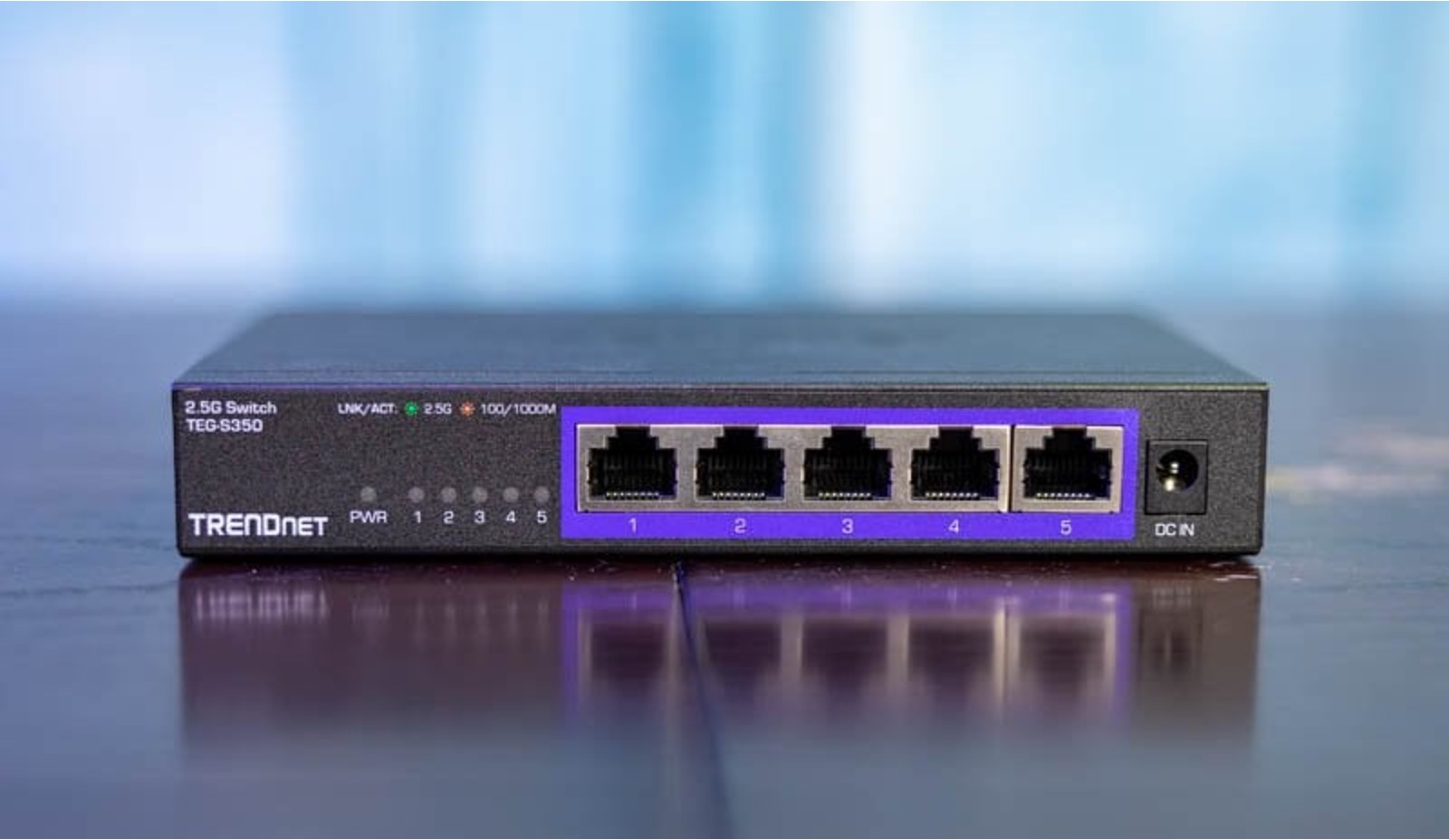Introduction
When your network switch becomes overloaded, it can lead to sluggish performance, dropped connections, and an overall decline in network efficiency. This can be a frustrating experience for both users and network administrators. However, there are several proactive measures that can be taken to address and rectify this issue. By understanding the causes of network switch overload, assessing performance, implementing bandwidth management, considering upgrades, utilizing VLANs, and monitoring network traffic, you can effectively alleviate network switch overload and optimize performance.
In this comprehensive guide, we will delve into the various strategies and solutions that can be employed to address network switch overload. Whether you're a seasoned network administrator or a business owner managing your network infrastructure, these insights will provide valuable guidance in resolving network switch overload issues and ensuring a seamless and efficient network operation.
Understanding the root causes of network switch overload is crucial in formulating effective solutions. By identifying the factors contributing to the overload, you can tailor your approach to mitigate these issues and enhance network performance. Let's explore the underlying causes of network switch overload and the steps to address them effectively.
Understanding the Causes of Network Switch Overload
Network switch overload can stem from various factors, each of which can significantly impact the overall performance of your network infrastructure. One common cause is the excessive volume of network traffic, which can lead to congestion and subsequently overload the switch’s capacity. Additionally, the proliferation of bandwidth-intensive applications and the increasing number of connected devices can strain the switch’s resources, exacerbating the overload.
Another contributing factor is the lack of bandwidth management, which can result in uneven distribution of network resources and lead to congestion in certain segments of the network. Furthermore, network switch overload can be triggered by inefficient network design, where inadequate provisioning of switch ports and improper segmentation of network traffic contribute to performance bottlenecks.
Moreover, outdated or insufficient network switch hardware and firmware can impede the switch’s ability to handle the escalating demands of modern network environments, leading to overload and degraded performance. Additionally, the absence of traffic prioritization mechanisms can exacerbate network switch overload, especially in scenarios where critical traffic competes with non-essential data for network resources.
Understanding these causes is pivotal in devising effective solutions to alleviate network switch overload. By addressing the root issues contributing to overload, such as network congestion, inadequate bandwidth management, suboptimal network design, outdated hardware, and the absence of traffic prioritization, you can implement targeted strategies to mitigate these challenges and optimize network performance.
Assessing Your Network Switch Performance
Before implementing solutions to address network switch overload, it’s crucial to assess the performance of your network switch comprehensively. This involves evaluating various key performance indicators to identify potential bottlenecks and areas requiring improvement. One fundamental aspect to consider is the switch’s throughput capacity, which indicates the volume of data it can effectively process without experiencing overload. By benchmarking the switch’s throughput against the actual network traffic, you can gauge its performance under typical operational loads and pinpoint potential overload scenarios.
Furthermore, examining the switch’s port utilization and traffic patterns provides valuable insights into the distribution of network traffic and the extent of congestion across different ports. This assessment allows you to identify high-traffic ports that may be contributing to overload and prioritize them for optimization measures. Additionally, monitoring packet loss and latency across the switch aids in understanding the impact of overload on data transmission quality, enabling you to address performance degradation effectively.
Conducting a comprehensive analysis of network switch performance also involves assessing error rates, collision frequencies, and the overall efficiency of data transmission. By scrutinizing these metrics, you can uncover underlying issues that may be exacerbating network switch overload, such as network errors, collisions, and inefficient data handling. Moreover, evaluating the switch’s compatibility with modern network protocols and its ability to support advanced features is essential in determining its suitability for handling contemporary network demands.
By leveraging network monitoring tools and performance analytics, you can gain a holistic understanding of your network switch’s performance and identify areas requiring optimization to alleviate overload. This proactive approach empowers you to make informed decisions regarding the implementation of targeted solutions, ensuring that your network switch operates at optimal efficiency and effectively manages network traffic without succumbing to overload.
Implementing Bandwidth Management
Effective bandwidth management is integral to mitigating network switch overload and optimizing network performance. By implementing robust bandwidth management strategies, you can regulate the distribution of network resources, prioritize critical traffic, and alleviate congestion, thereby enhancing the overall efficiency of your network switch.
One fundamental approach to bandwidth management involves implementing Quality of Service (QoS) policies to prioritize specific types of network traffic based on predefined criteria. By assigning priority levels to different types of data, such as voice, video, and critical business applications, you can ensure that essential traffic receives preferential treatment, mitigating the impact of overload on mission-critical operations. Additionally, implementing traffic shaping mechanisms enables you to control the flow of data, preventing bandwidth-intensive applications from monopolizing network resources and causing overload.
Furthermore, leveraging bandwidth monitoring and analysis tools allows you to gain insights into network traffic patterns, bandwidth utilization, and peak usage periods. By identifying peak traffic times and bandwidth-intensive applications, you can proactively allocate resources and implement policies to manage and optimize bandwidth usage, preventing overload during periods of heightened network activity.
Implementing access control mechanisms, such as port-based access control lists (ACLs) and network segmentation, enables you to regulate and segregate network traffic, preventing non-essential data from impeding the flow of critical information. By segmenting network traffic into distinct virtual LANs (VLANs) and applying access control policies, you can contain the impact of overload within specific network segments, ensuring that critical traffic remains unaffected.
By embracing these bandwidth management strategies, you can effectively alleviate network switch overload, optimize network performance, and ensure the seamless operation of your network infrastructure. Proactive bandwidth management not only mitigates the impact of overload but also enhances the overall reliability and responsiveness of your network, empowering you to meet the evolving demands of modern networking environments.
Upgrading Your Network Switch
Upgrading your network switch can significantly alleviate overload and enhance the overall performance and capacity of your network infrastructure. As network demands evolve and intensify, outdated or underpowered switches may struggle to cope with the increasing volume of traffic and the demands of modern applications. By upgrading your network switch, you can leverage advanced features, improved throughput, and enhanced capabilities to effectively address overload and optimize network performance.
When considering an upgrade, evaluating the switch’s throughput capacity and its ability to handle current and projected network traffic is paramount. Upgrading to a switch with higher throughput and enhanced processing capabilities can mitigate the risk of overload and ensure that your network can accommodate escalating data volumes without compromising performance.
Moreover, upgrading to switches that support advanced Quality of Service (QoS) features and traffic prioritization mechanisms enables you to effectively manage and prioritize critical traffic, mitigating the impact of overload on essential applications and services. Additionally, switches with enhanced buffering and queuing capabilities can regulate the flow of data, preventing congestion and overload during peak usage periods.
Embracing switch upgrades that incorporate modern network protocols, such as IEEE 802.1Q VLAN tagging and IEEE 802.1p priority tagging, empowers you to implement efficient network segmentation and traffic prioritization, ensuring that critical traffic is isolated from non-essential data and remains unaffected by overload scenarios.
Furthermore, upgrading to switches with advanced management and monitoring features provides greater visibility into network performance, traffic patterns, and potential overload scenarios. Leveraging these capabilities allows you to proactively identify and address network switch overload, optimizing performance and ensuring the seamless operation of your network infrastructure.
By upgrading your network switch to a more robust and feature-rich model, you can effectively mitigate the risks of overload, enhance network performance, and future-proof your network infrastructure to meet the evolving demands of modern networking environments.
Utilizing VLANs to Segment Traffic
Implementing Virtual Local Area Networks (VLANs) is a strategic approach to segmenting network traffic and mitigating the risk of overload within your network infrastructure. By isolating traffic into distinct VLANs, you can effectively contain the impact of network switch overload, optimize resource allocation, and prioritize critical traffic, thereby enhancing the overall efficiency and performance of your network.
One key benefit of VLAN implementation is the ability to segregate different types of network traffic, such as voice, data, and multimedia streams, into separate virtual networks. This segmentation prevents non-essential traffic from interfering with critical data transmission, reducing the likelihood of overload and ensuring that essential applications and services operate seamlessly.
Furthermore, VLANs enable you to establish logical network boundaries, isolating traffic within specific departments, user groups, or applications. By doing so, you can contain the propagation of network switch overload to localized segments, preventing widespread disruption and ensuring that critical network resources remain unaffected.
Implementing VLANs also facilitates the enforcement of access control policies and the regulation of network traffic based on predefined criteria. By applying access control lists (ACLs) and VLAN-based security policies, you can control the flow of data within each VLAN, preventing unauthorized access and minimizing the risk of overload resulting from malicious or unauthorized activities.
Moreover, the use of VLANs simplifies network management and administration by providing a flexible framework for organizing and controlling network traffic. This streamlined approach allows for efficient resource allocation, easier troubleshooting of network issues, and the seamless integration of new devices and applications without compromising network performance.
By leveraging VLANs to segment network traffic, you can effectively mitigate the risks of network switch overload, optimize resource allocation, and ensure the reliable and efficient operation of your network infrastructure. The strategic implementation of VLANs empowers you to proactively address overload scenarios and maintain the integrity and performance of your network in the face of evolving demands and challenges.
Monitoring and Managing Network Traffic
Proactive monitoring and management of network traffic are essential in mitigating network switch overload and optimizing the overall performance of your network infrastructure. By leveraging robust monitoring tools and implementing effective traffic management strategies, you can gain valuable insights into network behavior, identify potential overload scenarios, and take targeted measures to ensure the seamless operation of your network.
Implementing network traffic monitoring tools allows you to gain real-time visibility into data transmission, bandwidth utilization, and network performance metrics. By scrutinizing traffic patterns and identifying anomalies, such as sudden spikes in data volume or congestion in specific network segments, you can proactively address potential overload scenarios before they impact network operations.
Furthermore, deploying network traffic analysis tools enables you to identify bandwidth-intensive applications, peak usage periods, and traffic trends, empowering you to allocate resources efficiently and implement policies to regulate and prioritize critical traffic. This proactive approach minimizes the risk of overload and ensures that essential applications and services receive the necessary network resources to operate optimally.
Implementing traffic management policies, such as bandwidth allocation, traffic shaping, and Quality of Service (QoS) mechanisms, allows you to regulate the flow of data, prioritize critical traffic, and prevent congestion-induced overload. By defining traffic management rules and policies, you can optimize resource allocation, mitigate the impact of non-essential traffic on critical applications, and maintain network performance under varying load conditions.
Moreover, actively managing network traffic involves implementing access control mechanisms, such as port-based access control lists (ACLs) and network segmentation, to regulate the flow of data and prevent unauthorized or non-essential traffic from impeding critical operations. This strategic approach minimizes the risk of overload and enhances the overall security and efficiency of your network infrastructure.
By proactively monitoring and managing network traffic, you can effectively mitigate the risks of network switch overload, optimize resource allocation, and ensure the reliable and efficient operation of your network infrastructure. This proactive approach empowers you to address potential overload scenarios, prioritize critical traffic, and maintain network performance, ensuring that your network operates seamlessly under varying load conditions.
Conclusion
Addressing network switch overload is a multifaceted endeavor that necessitates a comprehensive understanding of the underlying causes and the implementation of proactive solutions to optimize network performance. By acknowledging the impact of excessive network traffic, inadequate bandwidth management, suboptimal network design, outdated hardware, and the absence of traffic prioritization, you can tailor your approach to effectively mitigate network switch overload.
Assessing network switch performance, implementing bandwidth management strategies, considering switch upgrades, leveraging VLANs for traffic segmentation, and actively monitoring and managing network traffic are pivotal in alleviating overload and ensuring the seamless operation of your network infrastructure. Through proactive measures such as these, you can optimize resource allocation, prioritize critical traffic, and regulate data flow, thereby mitigating the risks of overload and maintaining network performance under varying load conditions.
Furthermore, embracing advanced network monitoring tools, traffic analysis solutions, and traffic management policies enables you to gain real-time visibility into network behavior, identify potential overload scenarios, and take targeted measures to ensure the efficient operation of your network. By proactively addressing overload risks and optimizing resource allocation, you can enhance the reliability, responsiveness, and overall performance of your network infrastructure.
In conclusion, the proactive management of network switch overload is essential in maintaining the integrity and efficiency of your network infrastructure. By understanding the root causes of overload and implementing targeted solutions to mitigate its impact, you can ensure that your network operates seamlessly, even under demanding conditions. Embracing proactive strategies and leveraging advanced network management tools empowers you to address potential overload scenarios effectively, optimize network performance, and meet the evolving demands of modern networking environments.

























